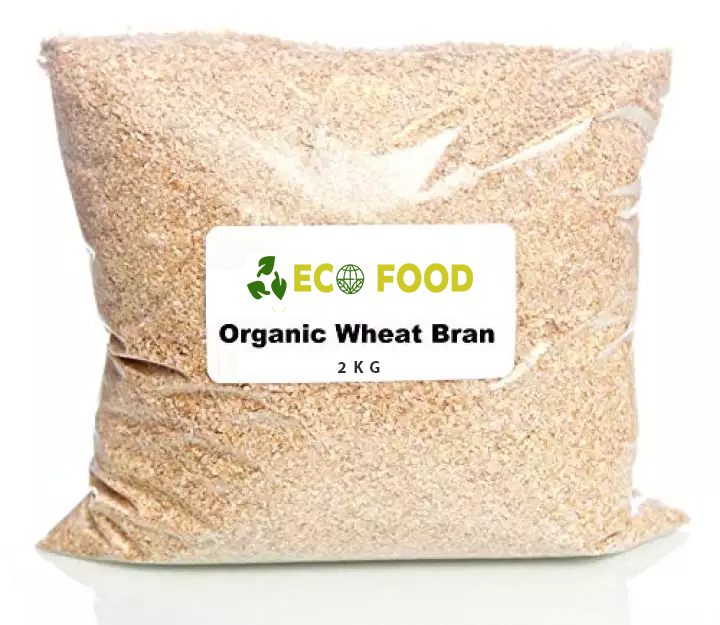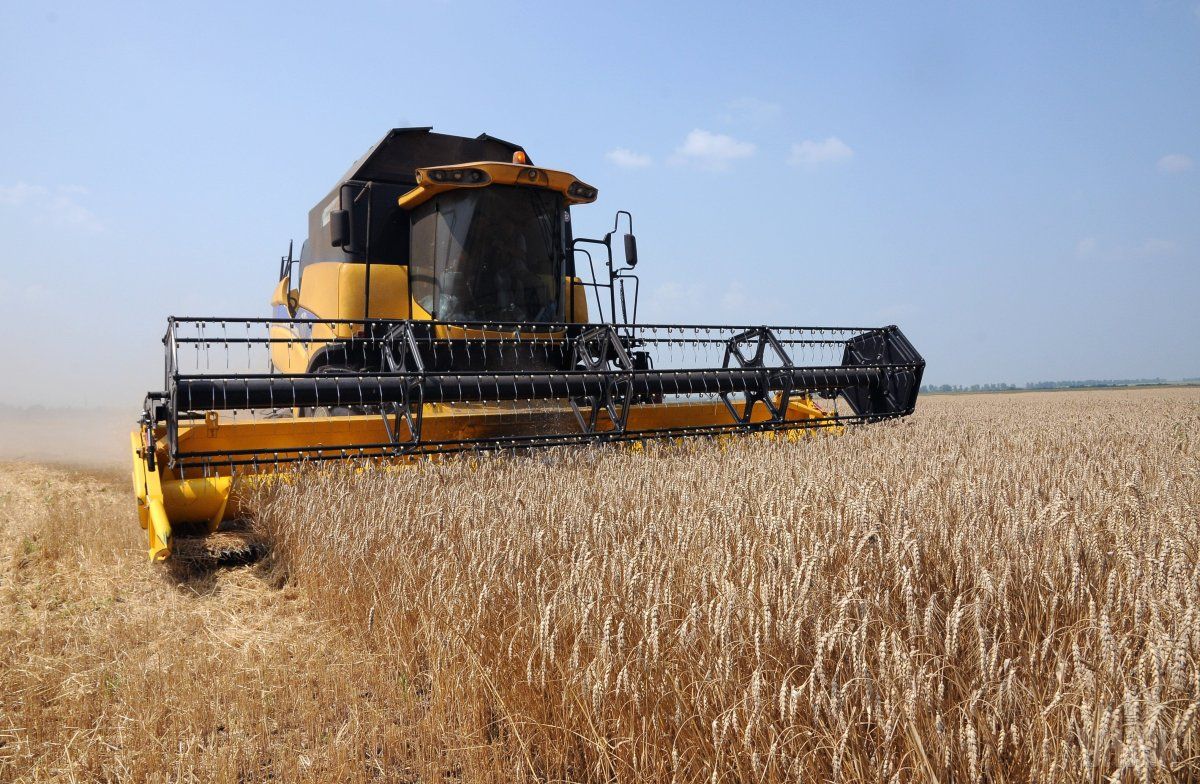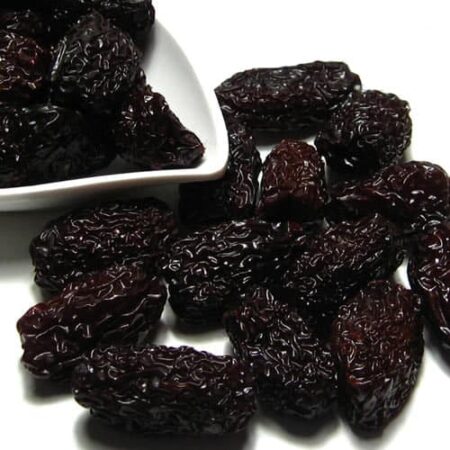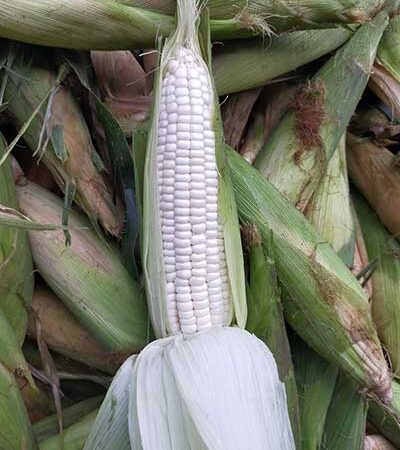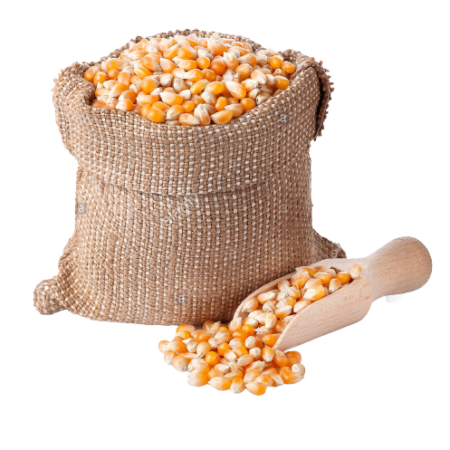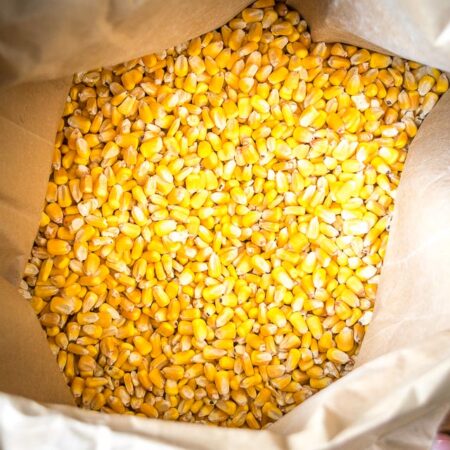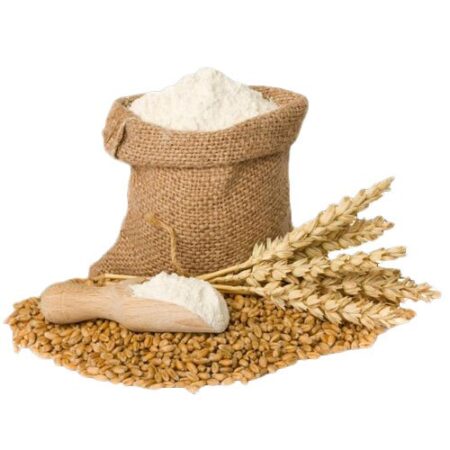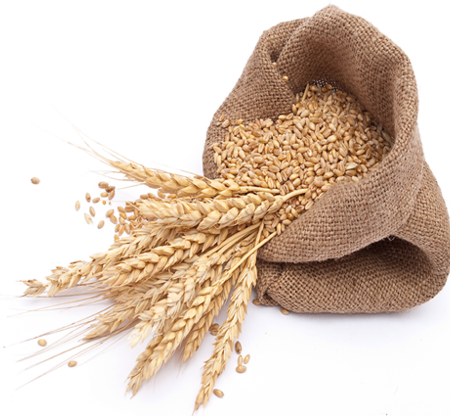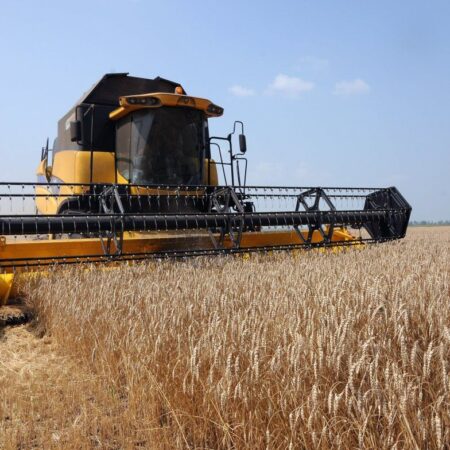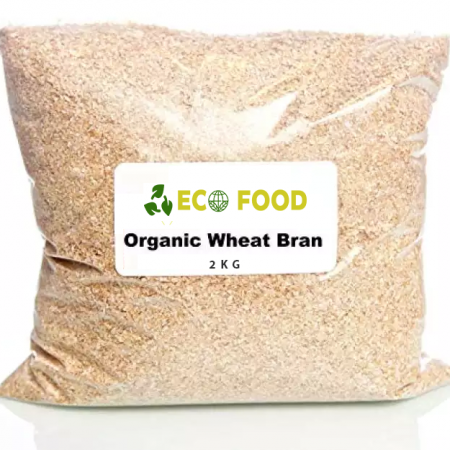Description
Wheat bran is chock-full of many nutrients. A half-cup (29-gram) serving provides (1):
- Calories: 63
- Fat: 1.3 grams
- Saturated fat: 0.2 grams
- Protein: 4.5 grams
- Carbohydrates: 18.5 grams
- Dietary fiber: 12.5 grams
- Thiamine: 0.15 mg
- Riboflavin: 0.15 mg
- Niacin: 4 mg
- Vitamin B6: 0.4 mg
- Potassium: 343
- Iron: 3.05 mg
- Magnesium: 177 mg
- Phosphorus: 294 mg
Wheat bran also has a decent amount of zinc and copper. Additionally, it provides over half of the daily value (DV) of selenium and more than the DV of manganese.
Not only is wheat bran nutrient dense, it’s also relatively low calorie. Half a cup (29 grams) has only 63 calories, which is minuscule considering all the nutrients it packs.
What’s more, it’s low in total fat, saturated fat and cholesterol, as well as a good source of plant-based protein, offering about 5 grams of protein in half a cup (29 grams).
Arguably, wheat bran’s most impressive trait is its fiber content. Half a cup (29 grams) of wheat bran provides almost 13 grams of dietary fiber, which is 99% of the DV
What Is Wheat Bran?
Wheat bran, also known as miller’s bran, is the outer layer of the wheat kernel. A wheat kernel actually has three parts: the germ, the bran and the endosperm. Wheat bran, which is the hard exterior of the kernel, is separated from the endosperm and germ during the milling process.
The nutty and sweet flavor of wheat bran only adds to its appeal. It’s also a source of plant-based nutrients and serves as an excellent source of fiber. It looks like tiny flakes that can be sprinkled on your morning yogurt or added to your daily smoothie.
Wheat Bran vs. Wheat Germ
Wheat germ is the embryo of the wheat kernel, while wheat bran is the outer shell that’s stripped away during processing in the production of wheat flour. Wheat germ provides a concentrated dose of vitamins and minerals, including manganese, thiamine, selenium, phosphorus and zinc.
It also contains 3.7 grams of dietary fiber per each one ounce serving. Although this is a good amount of fiber that can help support digestion and regularity, it’s about three times less fiber than what’s found in wheat bran. When comparing wheat bran vs. wheat germ nutritionally, they are both very similar, but bran comes out the clear winner when it comes to the fiber content. So if you are looking to boost your digestion, opt for wheat bran.
What germ is often found in powdered form, and like wheat bran, it can be sprinkled on hot or cold cereal, yogurt and salads, or added to your daily smoothie.
Wheat Bran vs. Oat Bran
Oat bran is the outer layer of the oat groat. It’s higher in calories than wheat bran, but it’s also higher in protein. Wheat bran contains insoluble fiber that cannot be digested by the body and helps promote regularity. Oat bran, on the other hand, contains soluble fiber, which forms a gel-like, sticky substance that binds to cholesterol in the digestive tract and pushes it out of the body through stool.
When it comes to micronutrients, both wheat and oat bran provide an array of B vitamins, including thiamine, riboflavin and vitamin B6. B vitamins help boost energy levels, focus and overall strength. Both are also good sources of magnesium, phosphorus, zinc and iron.
So if you’re wondering which bran is best, there’s no clear answer here. Both types of bran are nutritious and provide a number of health benefits. If you’re looking to improve your digestion and “keep things moving,” then opt for wheat bran. If you are more focused on detoxification and potentially reducing cholesterol, go for oat bran. Other than that, choose the type that’s more satisfying to you.
Wheat Bran Nutrition Facts
In addition to being an excellent source of dietary fiber, wheat bran is also rich in manganese, magnesium, selenium and phosphorus. It’s also low in calories and fat, while supplying a good amount of protein per serving.
One ounce (approximately 28 grams) of wheat bran contains about:
60.5 calories
18.1 grams carbohydrates
4.4 grams protein
1.2 grams fat
12 grams dietary fiber
3.2 milligrams manganese (161 percent DV)
171 milligrams magnesium (43 percent DV)
21.7 micrograms selenium (31 percent DV)
284 milligrams phosphorus (28 percent DV)
3.8 milligrams niacin (19 percent DV)
0.4 milligrams vitamin B6 (18 percent DV)
3 milligrams iron (16 percent DV)
2 milligrams zinc (14 percent DV)
0.3 milligrams copper (14 percent DV)
0.1 milligrams thiamine (10 percent DV)
0.2 milligrams riboflavin (10 percent DV)
331 milligrams potassium (9 percent DV)
22 micrograms folate (6 percent DV)
0.6 milligrams pantothenic acid (6 percent DV)
Health Benefits
1. Great Source of Fiber
Did you know that fiber intake for U.S. children and adults is generally less than half of the recommended levels? Well, just a quarter-cup of wheat brain contains six grams of dietary fiber. It’s so important to eat a high-fiber diet because as foods rich in fiber pass through your digestive system, unabsorbed by digestive enzymes, they take fat and cholesterol particles, waste and toxins with them.
Due to its fiber content, wheat bran helps improve the health of your gut, promotes detoxification and normal digestion, and boosts your heart health. A meta-analysis published in Nutrients, for instance, found that there’s an inverse association between dietary fiber intake and risk of metabolic syndrome. Metabolic syndrome is a cluster of symptoms that increase your risk for a number of chronic diseases, including type 2 diabetes and cardiovascular disease.
2. Acts as a Prebiotic
Wheat bran supports your gut health by acting as a prebiotic. Prebiotics pass through the gastrointestinal tract and remain undigested because the human body isn’t able to break them down. They end up reaching the colon, where they are fermented by the gut’s microflora. Eating prebiotic foods, like wheat bran, helps create positive changes in the digestive tract and body organs. They do this by becoming nutrient sources, or fuel, for the beneficial bacteria in the gut.
Beyond benefiting your digestive health, research published in Current Developments in Nutrition shows that consuming prebiotic foods also improves immune system defense, decreases allergy risk and increases calcium absorption.
3. Aids Digestion
There’s plenty of research indicating that eating foods high in fiber benefits a number of gastrointestinal disorders, including constipation, hemorrhoids and diverticulitis. Adding wheat bran to your meals can help to reduce issues like stomach bloating and discomfort too, as it promotes regularity and increases the healthy bacteria in your gut.
4. Supports Weight Loss or Maintenance
Eating wheat bran, and other foods high in fiber, leaves you feeling full and satisfied. This helps support maintaining a healthy weight. Adding wheat bran to your morning smoothie, hot cereal or yogurt can leave you feeling satiated and energetic for several hours.
A review conducted at the University of Minnesota’s Department of Food Science and Nutrition indicates that “increasing consumption of dietary fiber across the life cycle is a critical step in stemming the epidemic of obesity found in developed countries.” Researchers also concluded that the addition of functional fiber in weight-loss diets should be considered as a tool to improve success.
5. Rich in Manganese (and Other Important Nutrients)
A half-cup of wheat bran contains well over 100 percent of your daily recommended value for manganese, an essential nutrient that plays a role in many of the body’s chemical processes. We need to consume foods rich in manganese regularly for proper nutrient absorption, bone development, digestion and immune-system defenses.
According to research published in Frontiers in Bioscience, manganese plays critically important roles in development, reproduction, antioxidant defense, energy production and the regulation of neuronal activities.
Risks and Side Effects
If you are following a gluten-free diet, then you want to avoid wheat bran, as it comes directly from the wheat kernel. If you’re gluten-free because you have difficulty tolerating this type of protein, then you may experience adverse side effects if you do consume wheat bran. People with celiac disease, for example, may experience digestive symptoms, such as diarrhea and stomach pain, after consuming foods containing gluten.
For some people, eating certain grains, including wheat bran and other foods made from wheat, can cause digestive issues like bloating, abdominal pain, gassiness and belching. This is due to the fructans, a type of carbohydrate, that are found in certain grains.
Another major wheat bran side effect is caused by its phytic acid content. Phytic acid is known as a mineral blocker or enzyme inhibitor. It binds to minerals, so when we eat wheat foods, the vitamins that are present are bound up in phytic acid and can’t be digested properly. That’s exactly why sprouted grain bread is so beneficial — it kills the phytic acid. That said, if you stick to smaller portions of wheat bran regularly, like one to two tablespoons added to meals for the additional fiber content, the phytic acid shouldn’t interfere with your nutrient intake.
How to Use and Eat It
Wheat bran can be added to a number of goods and recipes, including baked goods, hot and cold cereals, smoothies, salads, and casseroles. You’ll find that it adds a sweet, nutty flavor to your recipes. Here are a few ways to include this fibrous food in your diet:
Use 1–2 tablespoons as a topping in this Coconut Yogurt Chia Seed Smoothie bowl.
Add it to baked goods recipes, like muffins, breads and rolls.
Add about 2 tablespoons to any smoothie, like this Gut-Healing Smoothie recipe.
Mix it into any casserole, like this Chicken and Rice Casserole recipe.
Mix it into these Chocolate Chip Oatmeal Cookies or any cookie recipe.
Adding wheat bran to your child’s breakfast is also a great way to increase his or her daily fiber intake and boost gut health. For children, add about one tablespoon to their oatmeal bowls, yogurt parfait or smoothie.
Wondering where to buy wheat bran? You can find it easily at your local grocery store or health food store. If you’re having trouble finding a brand you trust, it’s also available online.
Recipes
There’s no shortage of wheat bran recipes out there, but you’ll want to do a little research and go for a recipe that includes the healthiest ingredients possible. Skip the recipes with refined sugar and flour if you are looking to take advantage of this high-fiber food’s health benefits. Here are some suggestions to get you going:
Wheat Bran Muffins
Bob’s High-Fiber Bran Muffins
Oat, Maple and Nut Granola
Final Thoughts
What bran is the outer layer of the wheat kernel, which has a hard exterior that’s separated from the endosperm and germ during the milling process.
Wheat bran nutrition is quite impressive. It’s jam-packed with fiber and micronutrients like manganese, magnesium, selenium and phosphorus.
Which bran in best? Between oat bran and wheat bran, it’s a toss-up. Both brans are nutrient-rich and provide beneficial fiber, but the latter is better for improving regularity, while oat bran helps to remove cholesterol from the body.
How do you eat wheat bran? You can find it as small flakes or in powdered form. The best way to eat bran is adding it to your everyday recipes, like yogurt parfait, hot or cold cereal, salads, soups, casseroles, and smoothies.
Some potential wheat bran side effects come from its gluten and phytic acid content. If you don’t have a sensitivity to gluten and eat bran in appropriate amounts, about one to two tablespoons a day, you should notice the benefits of its high fiber content.

